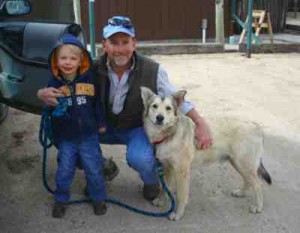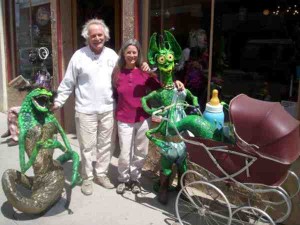Review by Ed Quillen
True Crime – June 2008 – Colorado Central Magazine
Simon Says – A true story of boys, guns, and murder
by Kathryn Eastburn
Published in 2007 by Da Capo Press
ISBN 0-306-81552-4
IF YOU’VE BEEN AROUND here for a few years, you likely remember this case: A teen-aged boy and his grandparents were murdered at their home near Guffey as 2000 was turning into 2001. After the bodies were found by a sheriff’s deputy, the most plausible theory was that the killings were connected to the “Texas Seven” — a group of convicts who had escaped from a Lone Star prison and fled to Colorado to hole up at Woodland Park.
But there was no connection. What finally emerged from Guffey was a crime somewhere past bizarre and nearly impossible to fathom.
At Palmer High School in Colorado Springs, there was a 19-year-old student named Simon Sue. He was only five feet tall, but so smart , personable, and persuasive that he convinced some of his fellow students that he was an officer in a secret paramilitary organization. It was called OARA, Operations And Reconnaissance Agents.
Sue said it was formed to serve in case there was a coup against the government of Guyana, a small South American country east of Venezuela. Simon’s father had a house full of guns, and the selected boys needed to master military skills and discipline. The boys had to plan some “operations,” generally involving theft. Then came murder.
Isaac Grimes had once been the best friend of 15-year-old Tony Dutcher, who was spending the holidays with his grandparents, Carl and JoAnna Dutcher, near Guffey. Isaac told Tony he would come up to visit, and Tony prepared some space in a hill-side lean-to where he “camped” on the property. Isaac arrived on New Year’s Eve with Jon Matheny, who drove.
Simon Sue had told the boys that the Dutchers had to be dispatched because the old man was a racist, and had some guns worth stealing for OARA purposes (although only two were taken).
Isaac slit Tony’s throat, and Jon shot the grandparents inside their home.
But none of this was known to the sheriff’s deputy who went to the house on Jan. 3, 2001, in response to a call from Carl Dutcher’s son James, who said he hadn’t been able to contact his parents for several days.
Deputy Henry Hasler found the grandparents’ bodies. He was from Teller County, which got the call, but the murder scene was in Park County; so Hasler secured the scene and turned it over to Park County. A Park County deputy found Tony’s body on the hillside.
[InContentAdTwo]
There wasn’t a lot of evidence, but by questioning Tony’s friends and acquaintances at Palmer High School, police started to put together the story. They found one OARA member, Glen Urban, who seemed almost eager to talk.
Urban had no direct role in the murders; he loved tinkering in his home workshop, and when Simon said the OARA needed modifications on a gun, Glen was happy to help. He explained to police that Simon said there were OARA operatives everywhere who could take out his family if he tried to back out.
After that, the pieces started to fall together, and it was fascinating to read about the various approaches the investigators took. What made it even more interesting, for me at least, is that I know the lead investigator — Leonard Post, who was Salida’s police chief before he became an investigator for the District Attorney’s office of the 11th Judicial District (Park, Chaffee, Custer, and Fremont counties). Some other familiar names — District Judge Ken Plotz, now retired, and prosecutors Kathy Eberling and Ed Rodgers — are also prominent in the story.
As matters developed, none of the four boys’ cases went to trial. They all made plea bargains, with Sue, Grimes, and Matheny all receiving long sentences. That meant that there never was a trial where the whole sequence was laid out before the public.
It was hard to figure out what had happened from the fragments about the arrests, evidentiary hearings, and postponements which came out in news stories. So it’s a blessing to have this book , which lays out the full story in a clear way — as one might expect from a competent writer like Kathryn Eastburn, former editor and columnist at the Colorado Springs Independent. Just about every question I had, from several years of trying off and on to figure out what was happening, was answered in readable and flowing prose.
Naturally, there are still things I wonder about, like how Simon Sue picked his recruits. Did he approach many boys with the prospect of joining an exciting top-secret organization? Or was he able to sense the vulnerable ones and work exclusively on them? If his stone-walling plan had worked on the Dutcher case, what might have come next? Is he somehow able to exercise his Charles Manson-like powers in prison?
But no book can cover everything. I’m a big fan of true-crime tales, and this one holds its own with anything by Ann Rule or Joe McGinnis. And it hits close to home, too. Read it so you’ll know how weird things can get in Colorado, and how justice here was served.


